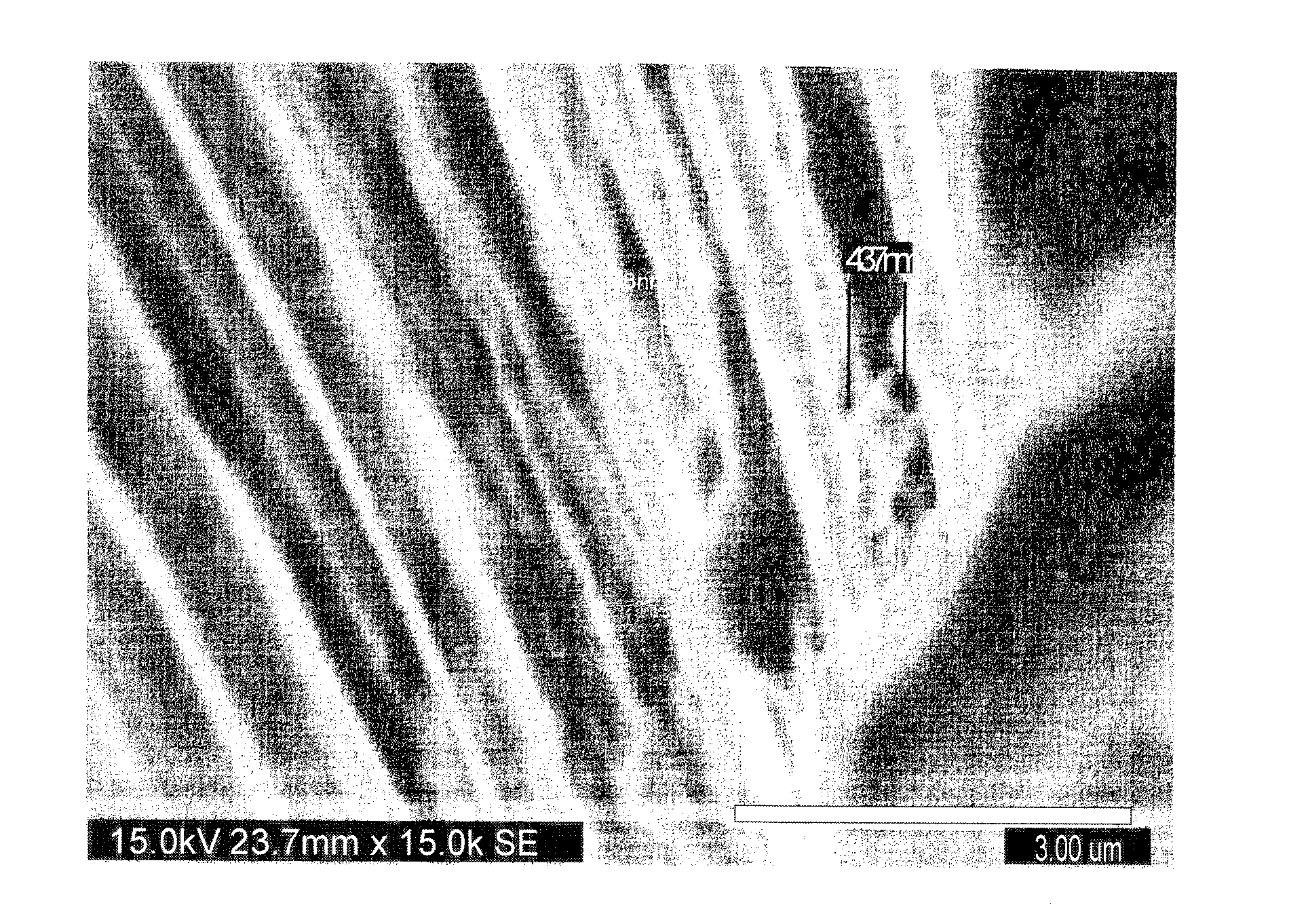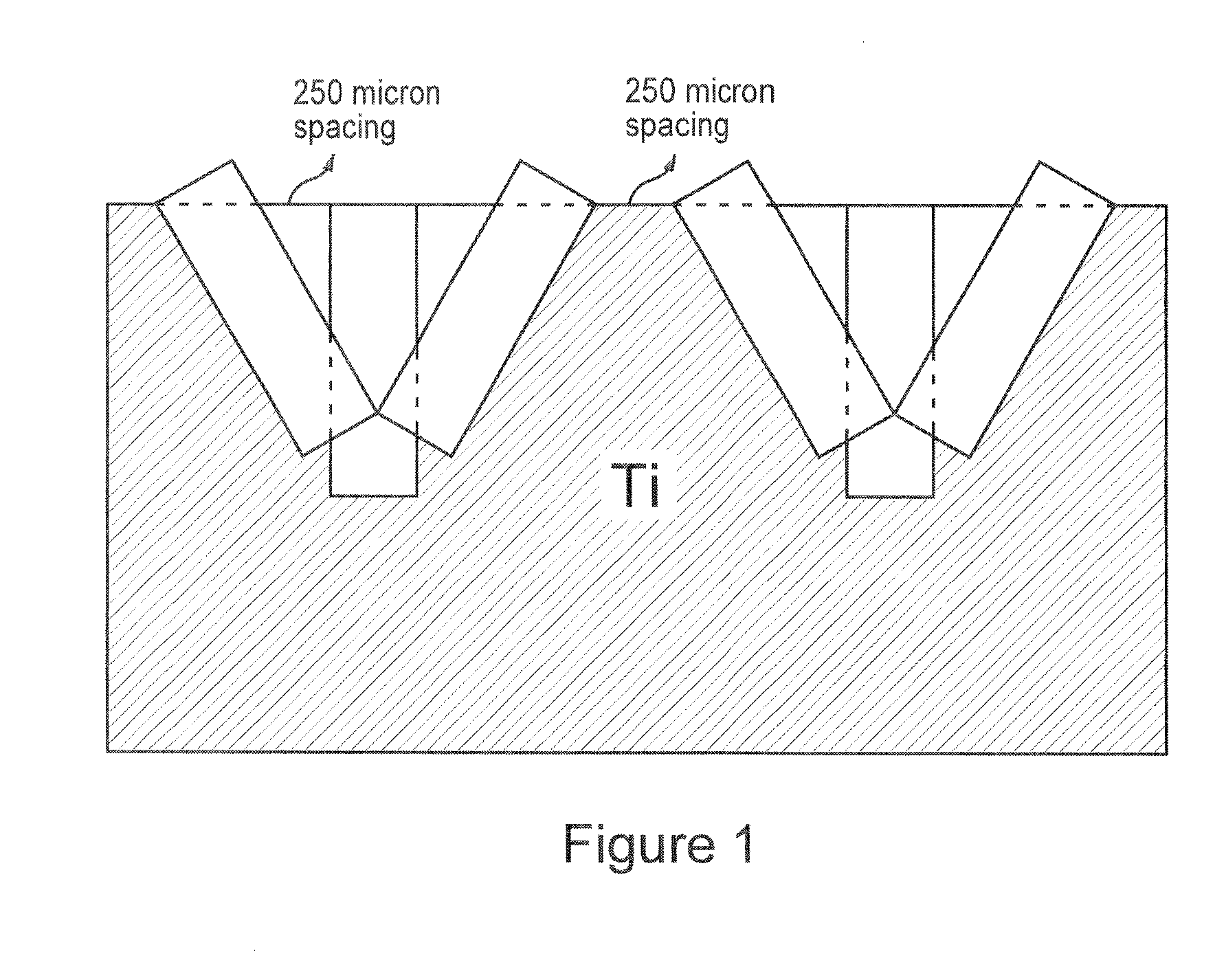Biomedical implantable material and methods of producing the same
a biomedical implantable material and implantable material technology, applied in the field of biomedical implantable material, can solve the problems of long recovery period, high cost of implant surgery, patient pain,
- Summary
- Abstract
- Description
- Claims
- Application Information
AI Technical Summary
Benefits of technology
Problems solved by technology
Method used
Image
Examples
example 1
[0039]A 2 mm thick×12.7 mm diameter CP Grade 4 disk comprising titanium was subjected to electro-discharging machining to create six perpendicular and angled pores. FIG. 1 shows a schematic diagram showing the expected pore or hole configuration geometry, as made by the electro-discharging machining (EDM) technique. FIG. 1 shows that the pore diameter is 250 microns, and the pores are spaced 250 microns apart. Two angled pores, which are at a 30° angle with respect to the surface, are interconnected to a perpendicular pore. The pores have a depth of about 1 mm. The nano-roughness of the surface of the pores after electro-discharging machining treatment is about 225 nm. After treatment with thermal oxidation at 250° C. under forced air, a layer of titanium oxide is formed on the surface of the pores, which have a nano-roughness of about 400 nm.
[0040]The pore morphology, including nano-roughness, was characterized by scanning electron microscopy (SEM) and x-ray diffraction (XRD). FIGS...
PUM
| Property | Measurement | Unit |
|---|---|---|
| diameter | aaaaa | aaaaa |
| depth | aaaaa | aaaaa |
| angle | aaaaa | aaaaa |
Abstract
Description
Claims
Application Information
 Login to View More
Login to View More - R&D
- Intellectual Property
- Life Sciences
- Materials
- Tech Scout
- Unparalleled Data Quality
- Higher Quality Content
- 60% Fewer Hallucinations
Browse by: Latest US Patents, China's latest patents, Technical Efficacy Thesaurus, Application Domain, Technology Topic, Popular Technical Reports.
© 2025 PatSnap. All rights reserved.Legal|Privacy policy|Modern Slavery Act Transparency Statement|Sitemap|About US| Contact US: help@patsnap.com



